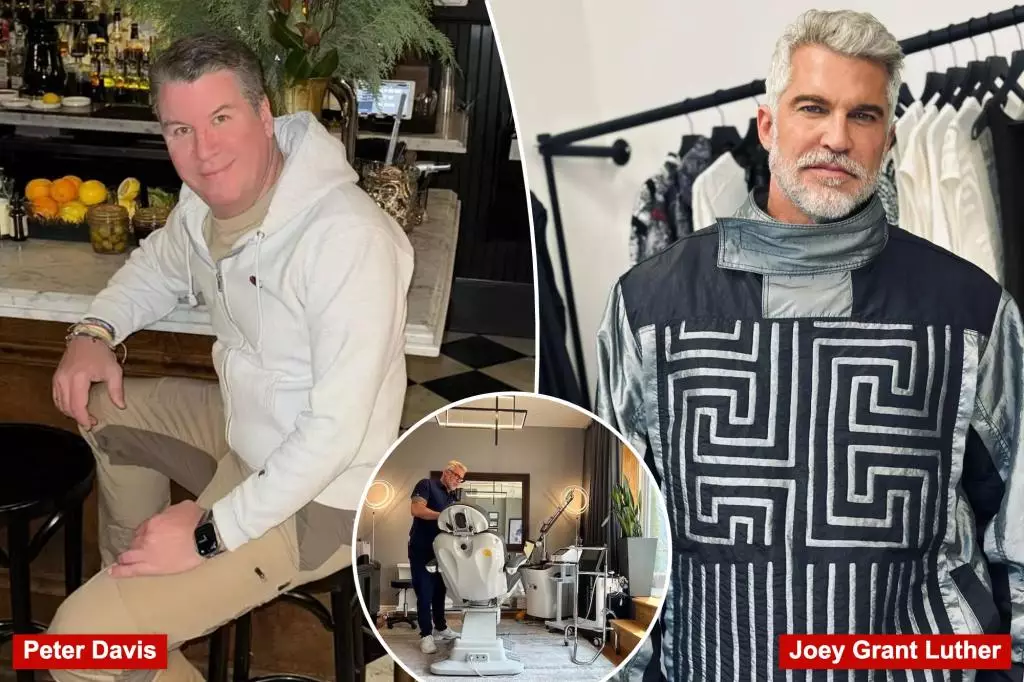In a shocking revelation that has sent ripples through the social elite, renowned skin doctor Joey Grant Luther was apprehended for allegedly administering counterfeit Botox sourced from China. This disconcerting turn of events has prompted a wave of introspection among his former clients, many of whom have formed a support group known as “Former Lutherans.” As this scandal unfolds, it not only highlights the dangers associated with unregulated cosmetic procedures but also brings to light the complexities of trust and reputation within the elite social circles that frequent these aesthetic treatments.
Joey Grant Luther, once a favored physician among the wealthy and glamorous, has found himself at the center of a maelstrom of controversy. The news broke when Peter Davis, the editor-in-chief of a prominent magazine, openly admitted to being a former patient of Luther’s and humorously noted, “It’s a miracle I still have a face!” His tongue-in-cheek remarks serve as a grim comedic relief amidst a harrowing reality where clients left with inexplicable physical symptoms. While Davis’s experience was relatively benign, many others suffered severe and alarming consequences from Luther’s illegal practice, including double vision and slurred speech.
Davis’s revelations have ignited discussions about the alarming lack of oversight in the aesthetic medicine industry. It is deeply troubling that so many patients were unaware of Luther’s questionable qualifications, raising the critical question of due diligence on the part of consumers. One of the primary complaints that surfaced post-scandal was the vague nature of Luther’s operations—his home was disguised as a legitimate medical spa, complete with treatments that should legally only be administered by licensed professionals.
The crux of this scandal revolves around the allure of discounted aesthetic treatments and the corresponding risks. Many of Luther’s clientele sought him out because of the “good deals” he offered, a temptation that blinded them to potential red flags. Undeniably, the social pressure to maintain a youthful appearance is palpable in certain communities, particularly in the affluent Upper East Side, where clients are often willing to overlook standard safety protocols for an attractive price tag. This phenomenon raises ethical questions about the commodification of beauty and the lengths individuals are willing to go to achieve social acceptance.
According to investigations by legal authorities, the appeal of “budget Botox” came at a dangerous cost. Patients unknowingly became victims of Luther’s disregard for medical ethics, with one client almost succumbing to botulism. The fact that non-physicians like anesthetists attempted to cash in on private aesthetic practices illustrates a worrying trend that blurs the line between healthcare and consumerism. This situation exposes a growing need for stricter regulations and public awareness regarding the qualifications of practitioners in the beauty industry.
In the wake of Luther’s arrest, the formation of “Former Lutherans” has provided a much-needed platform for former clients to detox from the emotional and physical repercussions of their encounters. Banding together, they swap stories and seek solace in shared betrayal, supporting each other through anxiety and uncertainty regarding their health and appearance. Some have taken action by reaching out to certified practitioners, hoping to mitigate the damage done to their confidence and skin.
The implications of this scandal reach beyond individual health; it serves as a wake-up call for communities profoundly affected by the allure of cosmetic procedures. Friends and associates of Luther have expressed shock, revealing a façade of normalcy that many believed defined the doctor. “He was charming and nice… everyone is totally shocked,” one former client stated, emphasizing the intense betrayal felt by many.
As we await further developments in this case, one undeniable truth arises: the world of cosmetic enhancement exists within a precarious and often unregulated domain that demands scrutiny. Luther’s misdeeds not only threaten public safety but also challenge the integrity of those who seek to uphold industry standards. In an age where image is prioritized, it is essential to foster a culture of informed decisions—where consumer awareness regarding qualifications and safety runs parallel to the desire for youthfulness.
The Luther scandal serves as a cautionary tale. It emphasizes the importance of vigilance in consumer healthcare as patients navigate increasingly complex choices that intertwine appearance with identity. Looking forward, it is the responsibility of both consumers and regulatory bodies to penetrate the smoke and mirrors of aesthetic medicine and ensure a safer, more transparent path for those seeking to enhance their beauty.
